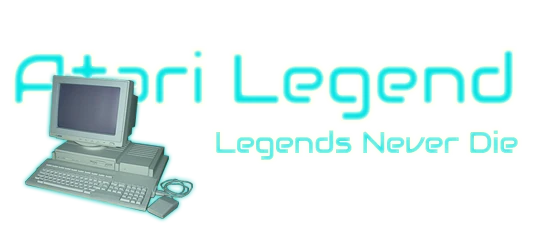

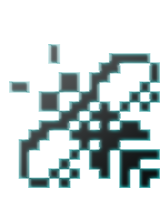





Dave Oldcorn has been an Atari ST fan since the very beginning. One day, he saw the game Devil Crash on the Sega Megadrive and that set him on an adventure to create a similar game for the Atari ST. This turned out the be the classic Starball. Read all about the details of making this PD classic right here.
There is currently no profile available in our database
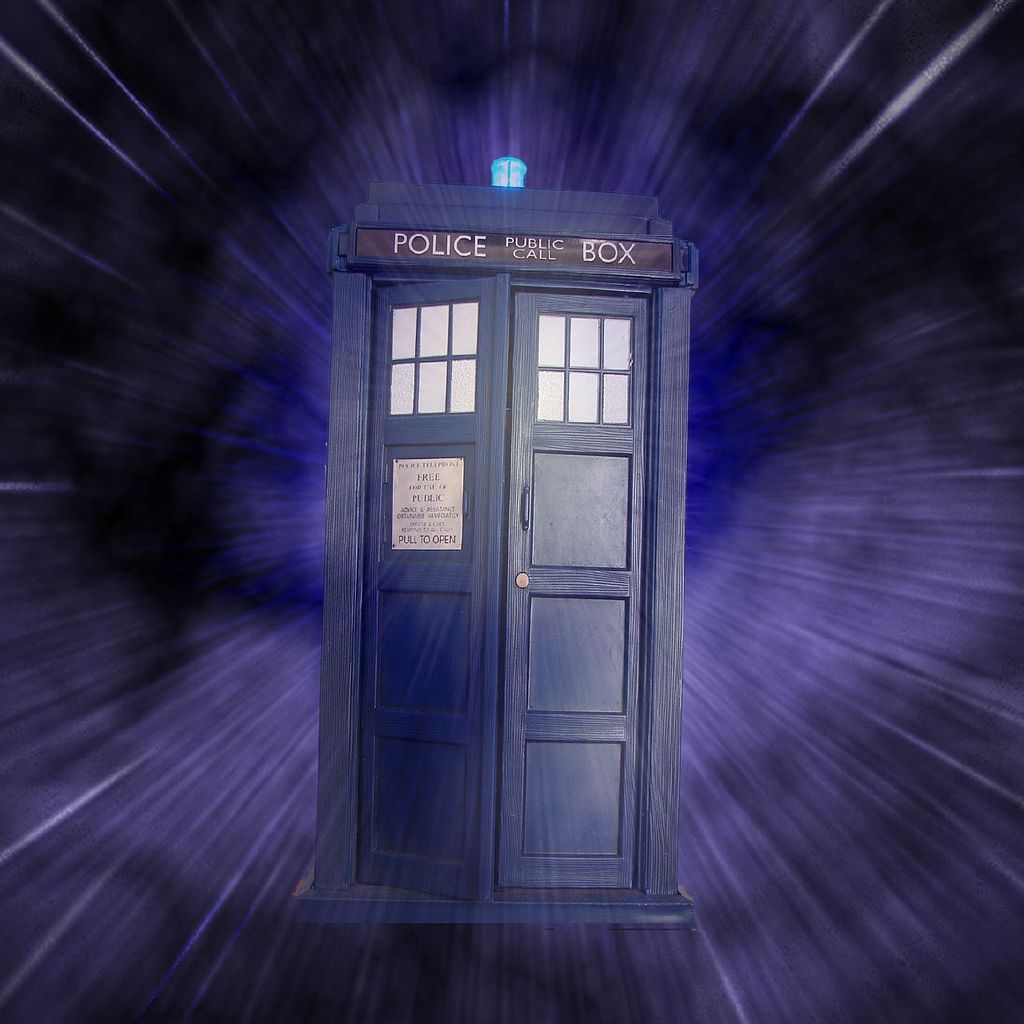
As a fan of doctor Who, Dave became a tech nerd himself. It was this famous series on the BBC that got him into computers eventually.
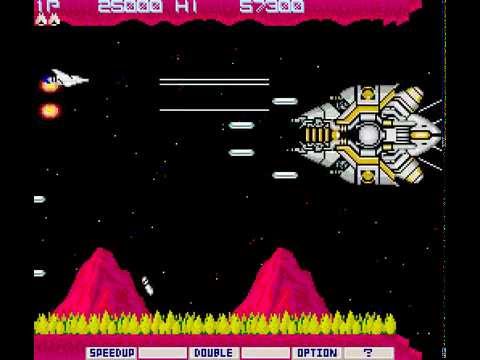
When Dave had played the game 'Nemesis' at the arcades, he knew he wanted to become a games programmer.
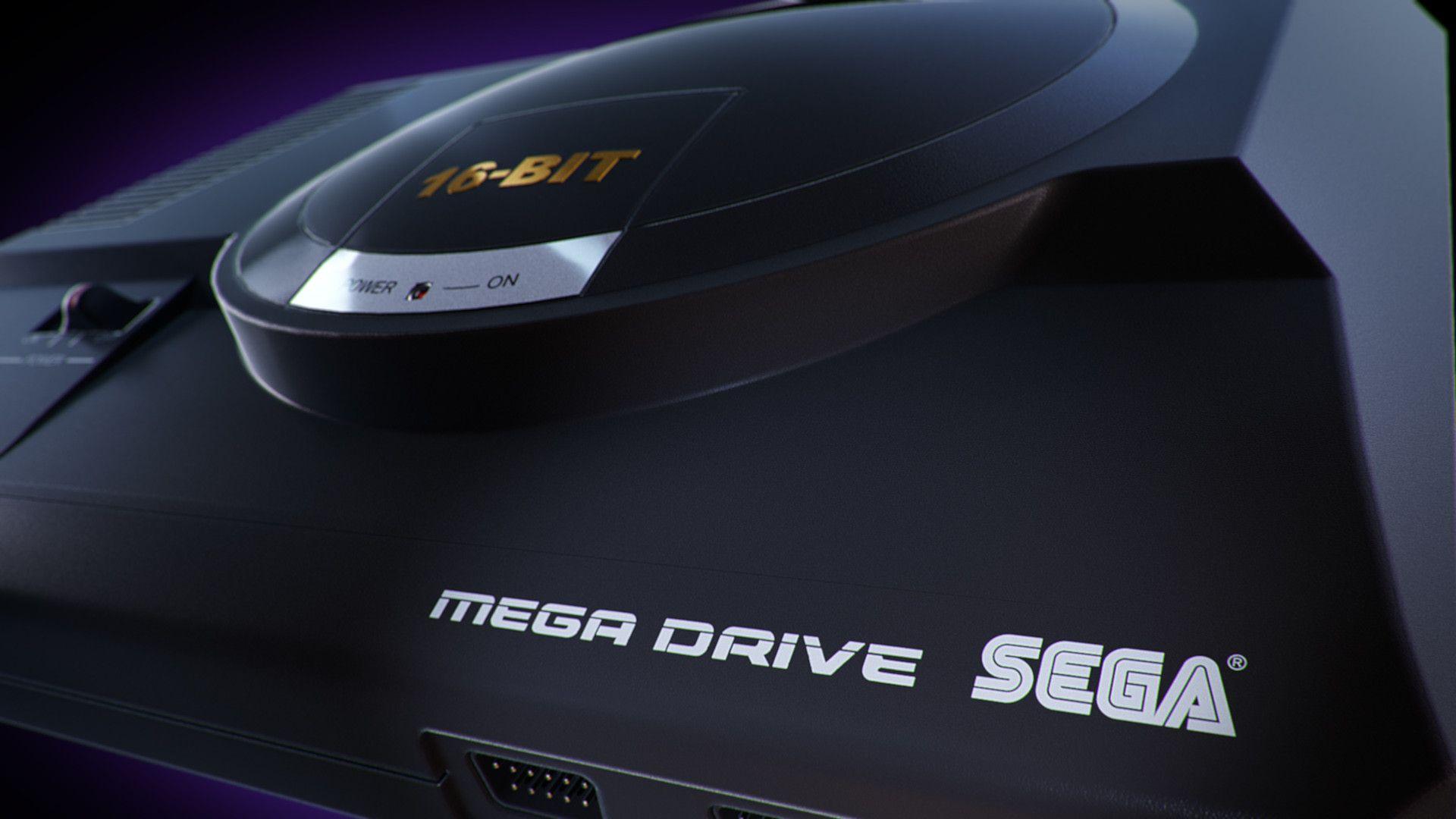
Dave played an awful lot of Sega Megadrive. This is were his obsession with parallax scrolling started.
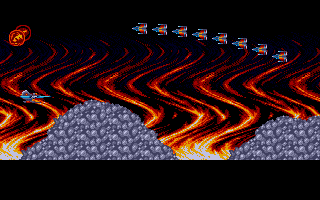
A screenshot of the shooter (inspired by Thunderforce III) on the Atari ST. The game sadly never got released.
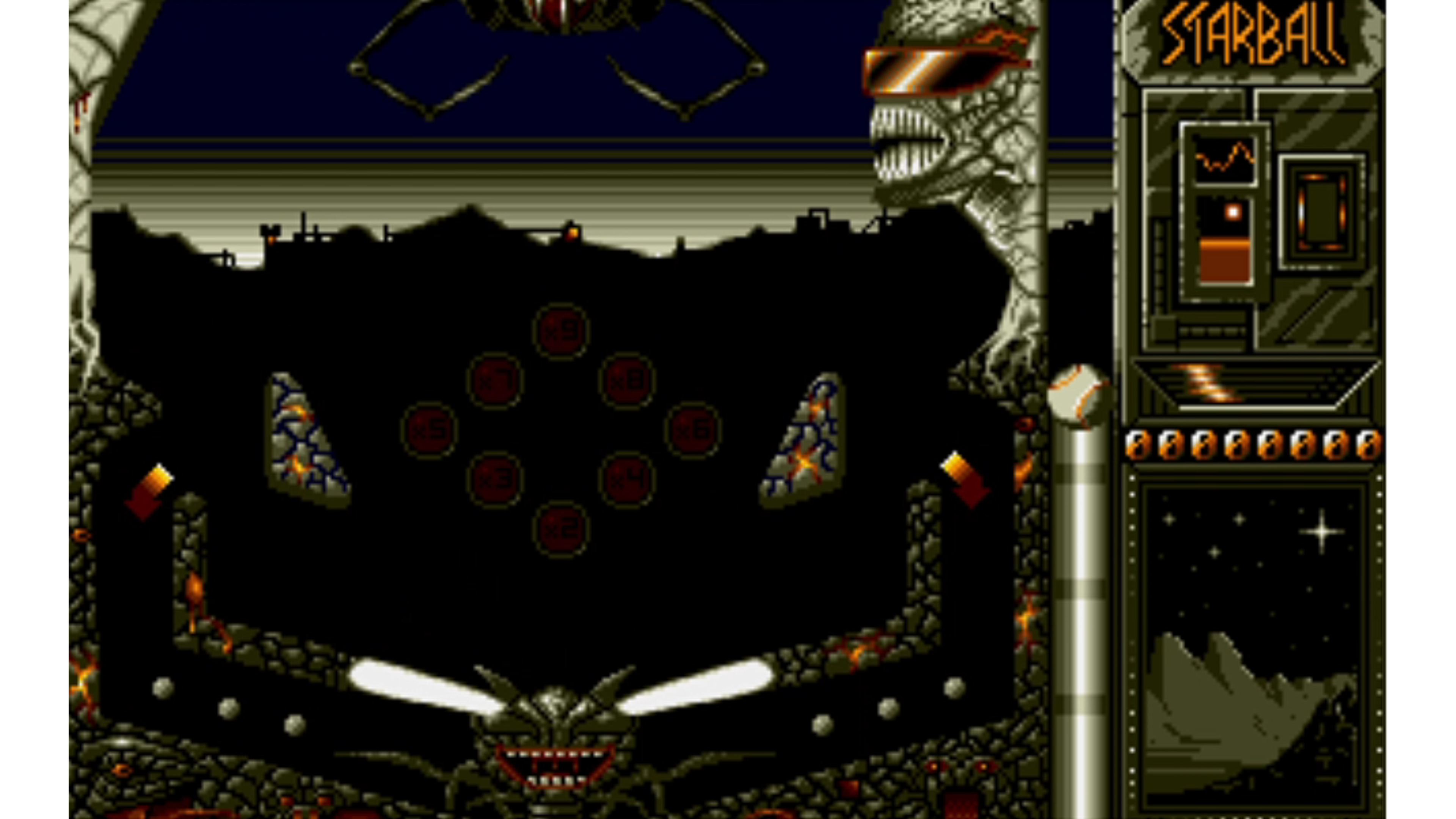
The flippers in Starball were not steep enough. Dave always considered this a flaw in the design of the game.
1) Can you introduce yourself to the public?
I’m Dave Oldcorn, programmer of Starball in my youth – now just getting ready to turn 50 and living a happy life in Newcastle, UK.
2) Tell us about your history with computers. When and on which machine(s) did it all start? When did you know you wanted to program software? What was the first thing you ever coded and on which machine?
I realized (relatively recently) that if I had to trace the ultimate starting point, it goes back to being three or four years old and basically wanting to be Doctor Who. (Apparently David Tennant did the same, but he thought of a better way to get there). I’m not sure the cause and effect, whether I loved that character because he was the ultimate techie – I guess we’d call him a nerd-hero or something nowadays – or that I got into the tech because of the character. But as a kid I was pretty obsessive over how things worked, electronics and computers.
As with my colleague here, my first computer was a ZX81, as a tenth birthday present. I never bought any software for it, just wrote my own. I graduated to a Spectrum and wrote a lot less code and played a lot more games – it just wasn’t a machine you could do work on, but I was always fiddling with things.
The day I knew I wanted to write games was the first time I played Nemesis (Gradius) in the arcade. I walked out and that night worked out some code, and the shoot 'em up that was the first thing Andy and I worked on together, had its origins in a (very basic) Nemesis clone I’d fiddled with in 1988 or so.
3) When did you buy an Atari ST and why?
Christmas 1986. It was time to move on from the Spectrum, and the ST was such a leap. High res display, disk drive. And clearly a burgeoning game market to go with it. Everything a computer-obsessed teenager needed.
In a sudden stroke I jumped from a machine that you just couldn’t work on, no matter how you expanded it, to one that was just as good for writing software on as using the software. And the first piece of software I bought was an assembler. By the end of Christmas Day I’d written my first 68000 assembly language code and actually run the program. I didn’t run my own Spectrum assembly until I wrote some on an emulator in 2003!
4) Let’s talk Atari now. In the amazing interview you guys did with Richard Karsmakers of ST-News, I have learned that Dave met Andy through a friend of his, when he was showing a shoot 'em up he was working on for the Atari. But when did you guys know you wanted to create games together? And whatever happened to that shoot 'em up? How far did this project go and is there still something left of it today?
Like most of the stuff I liked playing with it was a tech-led project. I had this Nemesis code, and then after Thunderforce III on the Megadrive I was trying to do parallax scrolling at playable framerates, and that’s the point at which I showed something to Andy and he replaced my awful programmer art with something better.
It floundered because at that point I wasn’t quite ready to get into the detailed work needed to do gameplay code, which needs a different mindset from flashy graphics hacking. There was a level table pointing to tables of waves, pointing to tables of enemies, pointing to tables of movement patterns, and I found myself naming this the “table table table table” in my code and the name was the most fun thing about it. It just wasn’t enjoyable trying to wrangle data structures like that in assembly language and I couldn’t find a simplification, but this was really fundamental to actually getting some game out of the thing. (In hindsight I needed to write a proper level editor and stop trying to generate the stuff by hand).
Any way I looked at it it was clearly a Big Job to get it done, and we were getting distracted by university. It started to drift and I never went back to it. It does still run and I have a couple of screenshots, but it was never anywhere near a game.
5) How did the Starball project start? Where did you get the idea from to create such a cool blend of a pinball game with a shoot ‘em up? Who’s idea was it? What can you tell us about the history of Starball?
It was shortly into the second year of university. I’d been working at a console shop over the summer and playing a lot of Tecnosoft’s excellent Devil Crash, and the shoot-em-up was running out of steam. The revelation that computer pinball can do things real pinball can’t was particularly interesting.
Then I was in the middle of an extraordinarily tedious solid state physics lecture when I worked out a theory of how, if I decomposed ball velocity into tangential and normal components to the wall, then I could simulate surface bounciness and roll, and also apply kickers and the like. By the end of the lecture I’d also worked out a cheap method to calculate the angle by which a ball hit a bitmap that marked the solid parts of the level. I then hacked something up in a couple of days to test it out and was more than a little surprised when it just worked even when combined with very simple drawn images and gravity models.
Sadly, while I still have a lot of the Starball design notes the page of solid state physics notes with the ball physics in the margin – by far the most useful thing I ever got out of THAT course – has been lost. I suspect they were in with a large pile of papers that were in the garage at my parents and eaten by mice.
Looking back the most interesting question isn’t how it started – I was very good at starting things – it’s the point at which it would have become an embarrassment not to finish it. I'd guess that's probably about the point that we stuck Invaderball in, about six months down the line. There’s a distinct change in the way we were approaching it. Certainly by early 1993 we’d committed to getting it done and my work ethic was just up to it. It was a close-run thing, though.
6) The game seems like an absolute technical marvel. Being able to play such a smooth game on a vanilla Atari ST. For the more technical readers out there, from a coding perspective, what do you consider the greatest achievement in this game? What was the biggest frustration? Please share as many details as you like and/or can remember.
Let’s put aside the strong argument to be made that the greatest achievement was actually finishing and shipping the thing, and the real frustration was that it took two and a half years!
There’s three bits I was particularly proud of – the ball physics were surprisingly effective for what was really a bit of a hack, and the core routines were never touched after the first few weeks; Andy was able to achieve an excellent amount of console-like ‘pop’, aided by the simple trick of palette switching between the three regions of the table; and there was an awful lot of democode-class graphic routine tweaking and load balancing to get it into a fixed 25fps budget on the ST and 50fps on the Falcon. Getting it to play identically at both framerates was via a nice trick too: on the ST, the ball physics ran twice per frame, and on the Falcon, the sprites and collisions only ran once every other frame.
The main nightmare was the flippers. My fault was this: I made a major design error early on and didn’t draw the flippers and feed lanes at a steep enough angle and then struggled with gameplay balance all the way through the project. By the time we realized what a problem it was (when we were reviewing the game before starting the PC port) it would have required a total table redesign to sort it out so we persisted with it.
An honourable mention goes to movement patterns for the sprites, which continued to haunt me from my "table table table table" days and is why the Starball sprites generally clomp around in simple, predictable paths.
7) Was Starball completely coded in assembler? And did you also use the 1986 tool K-Seka to program it? (in the interview with ST-News you mention you only used this tool for all your coding prior to Starball).
Yeah, the ST version was a one tool job. I liked a rapid edit-assemble-test cycle – no inline debuggers back then! – so using something that had to run off disk would have been a serious pain. It wasn’t terribly well equipped to cope with many thousands of lines of source, and I relocated a few parts (notably the bonus board and the sound routines) to separate compilations and loaded them at runtime as needed.
A main reason I bought a Falcon was that the assembly time got up to 20 seconds and it was really starting to slow the development cycle down.
8) To this day, Starball is considered one of the best games on the Atari ST. Why did you decide to release it as PD? Did you ever consider doing a full commercially published release of the game?
By 1994 it was few years too late – at some level I knew the double whammy of the 16-bit consoles and then the 1993 trio of X-Wing, X-Com and Doom on the PC had already killed the non-PC home computing market – ST, Amiga the lot. Although I don’t think I actively perceived this at the time (would I have bought a Falcon if I had…?)
I mean, the base ST was a not-particularly-ambitious 1984 design, the upgrades hadn’t been A. enough or B. successful, and it showed. But even the more capable and effectively upgraded Amiga was doomed to flounder against that level of competition and so it proved.
Since Jeff Minter had had some success with Llamatron on shareware and Doom was making it big news we thought we’d give it a go in the hope there was still enough momentum there to carry us through another Atari game. The goal wasn’t to be rich – just something back for the effort we’d put in. Although we knew we had something pretty good, so it would have been nice, and especially after the reviews, I may have got overexcited about deserving it.
If it had been five years earlier, I’m sure it would have got a solid commercial release, although I suspect it would have reviewed and remembered a little less well in a time with more crowded releases. I mean, it’s not Dungeon Master, even if its review score says it’s up there!
9) In the interview with ST-News, you were extremely frustrated by the fact only 30 people sent in the requested 5 quid for the game, while on day 1 of its release, it had 100's of downloads from a big BBS. However, by October 1994, in issue 63, ST Format reviewed Starball and gave it a whopping 96%. And in November, Starball was available on the cover disk of issue 64. Did this help to sell the game?
I’m sure it did – but not enough. In total there were a few hundred people sent something in, of which at least half was foreign money which back in those days cost a lot to change. From any actual commercial point of view, it was a disaster, or would have been had it not been written by a couple of university students.
It’s hard to say how much that was down to the declining platform and how much was just the shareware model not working out. Probably a chunk of both!
The economics of shareware are weird, though, because it’s a no-middleman business. A few hundred was a disappointment, but if we’d pushed that up to just a couple of thousand (which is, if we’re realistic, what we were thinking about) then that sounded like a lot of money to students. And if you get past that to say 10k units then that really would have been real money, although still not many sales if you’re looking at it from a commercial point of view. It didn’t look completely impractical, especially after the cover disk. Hence perhaps an excess of disappointment!
The review was awesome, though. Certainly over-inflated slightly by the lack of competition at the time, but whatever, I will take that score and stick it on my CV for life. It made it easier to get people to look at the PC version once it was ready, for sure.
10) How did you meet with the people of ST Format? And did you and Andy both at least receive any royalties to have the game released on their cover disk?
They pinged me on my university email, I answered a few questions and was slightly surprised when it turned up as a full-page interview about shareware and I got more space than Jeff did! And they stuck it on the cover disk, which as a PD game they were totally entitled to do. I don’t remember if they actually asked, although we definitely wouldn’t have said no.
11) Starball is chockfull of references to other classic games and has other links to pop culture. There are bonus levels inspired by Arkanoid, Space Invaders, Jeff Minter and of course … The Jimmy Hill chin bonus ???? Care to elaborate?
Starball ideas were on a "stick-it-in basis" – we weren’t ones to take ourselves too seriously, a good chunk of it was parody or comedy and as we weren’t exactly replete with ideas, I don’t think we really had anything that didn’t make it in.
Doing a version of something else is an easy source of ideas, as well as providing a recognition pang when people see it. Invaderball came up pretty early on, it was an easy and good idea. Llamaball was, as I may misremember it, basically down to Andy giving me a page of Minteresque sheep and TARDIS sprites and winging it from there.
As to the Jimmy Hill’s Chin bonus… this comes from my pub quiz team back at sixth form college, which was always named with English football-commentator-related “jokes”. And Jimmy Hill was a man well known for his pointy chin (see image below) and not for being a green-skinned alien with wrap-around shades. Other names used included Des Lynham’s Moustache and John Motson’s Stats Book. Recently it caused a little hilarity but more confusion when Jimmy Hill’s Chin won a lunchtime around-the-pool quiz while on holiday in the Canary Islands. My children think I’m weird, but I’m their dad, that’s my job.
The bonus itself, I should have made it multiplied by the bonus multiplier, so you had to try to avoid it until you had a high bonus multiplier, since it was a one-off bonus. But well-designed scoring was not one of the game’s strong points!
One of the late fun things was that, just as I was doing the extended version with samples, the 1994 World Cup was on. So I spent a couple of days taping commentaries on the Student Union sound system (we were showing the matches live in the venue) and trying to find a good Jimmy Hill line to stick in. We decided not to use the sample on the PC version to avoid any legal risks, but my brother refused to playtest without it, so I had to add some code where it would pick a sample up off a separate folder on the hard drive if it was present and ignore it otherwise.
12) Another thing that strikes me is the intro music. It was composed by the one and only Dave Moss (aka Spaz) of The Lost Boys. Was this track specifically made for the game? Do you remember any details about this collaboration?
By an astounding coincidence, Tim Moss was on Andy’s course at university. I personally only met him a few times, but we had a couple of excellent demo-coder arguments in the university bar, which he usually won on the grounds he’d actually published several demos and I … hadn’t.
As I remember it, Andy mentioned that we were working on the game and Tim very generously offered a piece of music his brother had knocking about.
13) When you released Starball, you were called ‘Volume 11 Software’. What does this name mean? Where does it come from?
It is, predictably, a Spinal Tap gag. I stuck it in the top of the Starball code early on for reasons that now escape me and Andy made it stick by drawing a logo. We didn’t have the imagination to replace it, even when we later started contracting to big US companies, although by then we were shortening it to V11 most of the time. It means I’ve always had a very short email address, at least.
14) Starball was also released for DOS. It was more successful commercially. Did this give you any satisfaction? And are there any differences, technical or gameplay wise, compared to the ST version (apart from the 256 color graphics upgrade)?
While we made most of the money we did make from Starball via the PC version, its level of success still wasn’t that great, well under a living wage. We remained firmly not rolling in used cash afterwards!
The PC version is a better polished product with a bit more depth to it. As you say, obviously Andy’s graphical update is the most visible thing and that helps the level of ‘pop’ jump up significantly, it’s a significant jump, ahead of console level I think.
Under the hood the game is a different beast – a genuine engine rather than the monolithic blob of assembly code Starball had become. It was mostly C code with asm only for the graphics, and the table game state management coded in a very noddy custom programming language. That was done intentionally to help control the bug count and it worked well. The idea was that bugs in the interpreter would show up immediately, and bugs in the game code just needed once-through testing. That said, custom programming languages aren’t really a great solution, especially not ones that come across looking a bit too much like COBOL.
The engine made lots of things like bonus screens particularly easy. Indeed, everything was ‘a pinball table’ – in the PC version even the logo screens and high-score-table are a pinball table with no ball, and they all just chain to each other.
It’s got multiball as well, I worked out some algorithms for that, they wouldn’t have been a problem on the ST but we had a lot more horsepower on PC for sprite collisions, which are surprisingly expensive. The ST version had to have a bunch of tricks to cheapen these to avoid it taking too much frame time. We also used this on another bonus table called ‘The Pool Table’ which let you play multiball-pool with only one ball having gravity on it. Gametek asked us to pull that and turn it into a whole game, but we couldn’t think of enough good ideas to make it work, so the world lost that, bit of a pity.
In terms of sheer productivity I don’t think I’ve ever achieved anything close to what I did with the PC version – I taught myself the PC from scratch (x86 asm, VGA, multiple sound cards, the lot) and wrote 400KB of code in 12 months doing something that wasn’t totally a natural fit for that hardware.
But in many ways the biggest change and thing I’m most proud of is the music and sound, where we were able to use 100% samples and both FM and wavetable synthesis. I wrote most of the music, with my brother chipping in one track, and a fair amount of it came out well. I’ve always enjoyed composing bits and pieces but I’ve found I need a target to get me to finish something (yes, we are seeing a pattern here) and Starball did that. More recently I’ve been able to contribute tracks for a couple of Jeff Minter’s games (TxK and Polibius) – which is a great honour, especially given how well the music was received on both.
15) After Starball you guys ditched Atari, and rightfully so, even though you both hated the PC platform. However, you talk about the development of a beat ‘em up? Was there ever anything done for this game? Do you remember anything about it?
We were looking at doing a high speed IK+ like game with multiple characters for the Falcon, under the codename Super Kick Up. I found it fun working in the 16-bit modes and there were lots of fun little new graphics tricks to try there.
But it was pretty obvious the Falcon wasn’t going to be a money-making platform, and I needed to switch to PC if I wanted to go for this as a career. On reflection, gameplay wise we would have been out of touch with the Street Fighter style, so between those two factors stopping work early was very much the right call.
16) Did you do other games with Volume 11 for other systems perhaps? Or did you work together on other software after the Starball adventure?
So there was a Starball II, for about 6-8 months before it became clear we weren’t likely to get paid for it. This was a seven table story-driven comedy space pinball – not a game description you’ve probably heard before.
It had high res (640x480) 16-bit colour graphics, which was a technical risk (in DOS it was far from well supported) but a giant visual upgrade for 1995/1996. It was looking very pretty, and we were making slightly better progress on gameplay than we had in Starball.
It was all kind of secondary to the plot though. In some places this was a bit silly and in other ones it was very silly and the crazy psychopath lead character and his sarcastic snarky computer were so ridiculously over the top, that he generated dialogue and plot contusions to a dangerous degree. A good example is when Andy drafted this bad guy which looked a bit like Darth Vader with the corners squared off and immediately the ‘hero’ started calling him Buckethead and it stuck. It felt like he was writing the thing more than we were.
Even by the limited point we got to the script already had about 500 lines of dialogue and it’s likely it was a game that would have had more plot than game, although at least that was helping us with putting in more gameplay depth.
It would have been … interesting to see the finished product. From this distance I now have more than a little suspicion it might have been a crazy mess.
But that started to fall through and fortunately Andy saved us both. While I was recoding the original Starball for the PC, he had put his coder’s hat back on and got a job with Argonaut in their tech division for a year or so. After he very generously gave up regular money to come back to work full time with me for nothing certain it was only about six months before Starball II started trending towards collapse and when that started to look likely we were able to refill empty coffers with contracting jobs to do video drivers on the 3D hardware cards that were just coming out. That put our foot in the door of a new industry just as it was starting out and gave us contacts to get more work from big graphics companies of the time like S3 and ATI. It set us off on a different career direction, working with drivers (fundamentally still ‘poking at complex bits of hardware’) and game companies on the new 3D games. We then worked together as contractors for several years, including early 3D hardware ports – we had a hand in some of the Tomb Raider, Unreal and Quake II/III hardware-accelerated versions, amongst others.
We make a solid technical team, complimenting each other well – Andy excels at deep thinking and I am a bit more take-these-five-crazy-things chap and together we can usually work out a good idea or two. Whatever the magic is, we seem to brainstorm problems very effectively, it’s been noticed by more than a few colleagues over the years.
17) What are you up to these days?
… so fast forward 20 years, and although we have taken separate routes around that industry a bit, we both stayed in the 3D hardware business and now work for AMD. I’m an AMD Fellow working on future graphics architectures and occasionally turn up at GDC and the like talking future graphics APIs.
I should note Andy is much more important than me there!
18) Are you a gamer? And if so, what is your all time favorite game, old and/or new?
I’ve always liked playing games and studying games, especially ones that do something a bit different and invite depth of thought. My all-time winner is probably the ZX Spectrum classic Lords of Midnight, which was both a phenomenal technical achievement and an awesome gamel. In the past I ported it to the to ST just to play it (including writing software to read the Spectrum tape through a sampler!) and later recoded it in high-level form on the PC to teach myself C++. So, yeah, I think that probably shows dedication to the Midnight cause.
19) If you could have a drink with anyone, dead or alive, who would it be and what would you ask?
Ah, well, mine probably applies for both of us, I expect Andy would love as much as me if we could revisit those times when we went down the pub with one or both of our dads, who were great characters and at their best in that environment. Many happy memories there!
20) Any last words of wisdom you like to share with the Atari community?
It sure was fun being deep in it at the time. All retro is like that – the combination of surface simplicity and deeper complexity that you got in those early machines was a magical combination. I’m sure I’m not alone in coders in missing the days when you could sit down and crack your knuckles and try to do something impossible with not much more than hacking out a bit of assembly language for an afternoon. Or, indeed, if you were that way minded you could build your own computer from discrete logic.
I’m not so much involved nowadays, but I do enjoy writing and improving ST emulators occasionally – I was able to contribute a bit when the IPF format first came in, and in working out some of the ST’s subtle CPU timing issues back in the 00s. And I do like a good pointless retro project. I hacked together a chunk of a design for a 1970s class 8-bit RISCish CPU last year…
Of course, I didn’t finish it.
Thanks a lot Dave!
Check out the Starball documentary for even more info.
And for a development log and more technical info on the making of the game, see this article.
August 5, 2025 by grams88
Martin Brownlow is a living legend. Best known among ST fans for creating the beloved PD/shareware classics Grav and Grav 2, his games are still cherished by many to this day. From a young age, Martin knew he wanted to make games for a living...and he made that dream a reality. In fact, he’s still doing it today. Discover the full story and much more in this exciting new interview.
October 4, 2024 by grams88
Stacey Jamieson began his career at DMA Design, working on titles such as Oh No! More Lemmings, Walker, GTA and others. Over the years, he moved on to Electronic Arts (EA), where he contributed to major games like the Star Wars Battlefront series, Mass Effect, and Need for Speed. Today, he is the co-founder of Expression Games, where he continues to pursue his passion for game development. What an exciting career!
July 29, 2024 by grams88
Who doesn't love a good underdog story? Chris Sharp is a noteworthy apprentice of the renowned François Lionet, as he mastered the art of coding with the almighty STOS Basic. Chris crafted a few games for our cherished ST, including fan favourites like Magic Tomb and the Freaked Out series. Intrigued? Dive into our interview to revisit the era when game development could still be a solo endeavour.
July 16, 2024 by grams88
When Sega released its Master System, it came bundled with the game Alex Kid. To this day the game remains very popular, loved by many. One of those people is Terry Lloyd. More so, Alex Kid was the main inspiration for the Atari ST platform classic Axel's Magic Hammer. But that is just one of his many accomplishments. Terry has been around the block. Working as an artist and game designer at the beginning of the 80's for Gremlin Graphics, he then moved on to Core Design, which he helped get off the ground. During the 90's he contributed to founding the company Malibu Interactive. On the Atari ST, Terry's resumé include Dynamite Dux, Car-Vup, Rick Dangerous 1 & 2, Torvak the Warrior, WarZone and many more. Read all about this veteran of the games industry in this exciting interview.
April 18, 2024 by grams88
It doesn't always have to be about computers, coding and graphics. Adrian Powell, the artist behind the original Lemmings game, crafted all its artwork, including box art and promotional materials. His passion for painting lemmings has persisted over time and he is still painting lemmings to this day. Powell's work remains influential and has helped selling millions of copies of this classic (ST) game.
Currently 0 registered users online
In the past 24h there were 2 registered users online